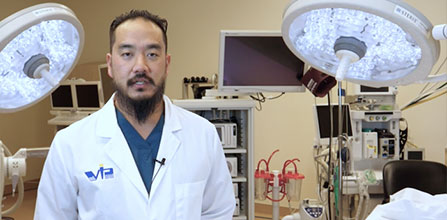When You Can Start Running After Bariatric Surgery

Many of our bariatric surgery patients lose enough weight and have a significant improvement in their health and mood, and they feel invincible just a few months after bariatric surgery. This motivation often gets them through the difficult early months, but it is also a sentiment that can lead to overexertion and injury. Many of our patients look forward to running as their exercise of choice.
Whether they were runners earlier in their lives or see the enjoyment many runners get from the activity, jumping right in is easy. Running, after all, has several benefits, including being able to perform the activity with others or solo, participating in competitions, like 5Ks and 10Ks, half marathons and even full marathons, enjoying the endorphins that are derived from strenuous exercise, and seeing significant improvement in a short time. On the other hand, however, bariatric patients must understand the plethora of considerations before they start a running regimen.
Think of Your Knees and Joints
The lower body takes the brunt of running’s impact, and as such, it is especially strained and stressed. This does not necessarily mean that runners will have bad knees, but it certainly increases the risk. Runners can do plenty of things to slow down the wear and degradation of these critical joints.
First, get the right running shoes. Dozens of brands offer everything from mild to significant support and cushioning. Everyone will have their preference, but a highly padded shoe is a good idea if you are in the first several months after bariatric surgery and running is high on your list of activities.
Second, make sure you run on relatively softer surfaces. If you’re running indoors, using a treadmill can be beneficial as the treadmill absorbs some of the impact. If you run outside, consider running on sand or grass, remaining mindful that they are not as flat as artificial surfaces. Running on a rubber track may also reduce the impact on your joints. Running on concrete is not a great idea.
Of course, the more weight you lose, the less impact you’ll have on your knees and joints. While this seems obvious, many do not realize that for every excess pound of body weight, you put an extra 4 pounds of pressure on your knees. So, losing that weight can keep the joints in great shape.
Monitor Your Pain Levels
While you may still damage your joints and body even if you aren’t feeling acute pain while running, you are definitely making it worse if you do feel pain. Pain is our body’s way of shouting that something is not quite right. You may have a good amount of pain after bariatric surgery, especially as you ramp up your exercise efforts. If you feel pain, stop, regroup, and return to an intensity or duration that did not cause pain. Use pain as a guide to know you are ready for that level. Don’t let pride push you through painful events – they could eventually cause injury.
Get Advice on How You Run
Running technique is essential – from your gait to your upper body position. If you use poor technique, there’s a significant likelihood of injuring yourself or doing long-term damage. However, good form can take some impact and strain off other body parts, including the back, neck, hips, and more. Proper running technique is something you can discuss with an exercise physiologist, personal trainer, or running stores that are equipped to offer a professional consult.
The bottom line
Good running is about deriving pleasure, a sense of achievement, and strenuous exercise while minimizing or avoiding injury. When you consider running your preferred exercise, please consult with your doctor or qualified exercise physiologist to learn more about the options for combining exercise and proper technique for maximal enjoyment. A small investment in your body and running style can help you get results now and in the future.



